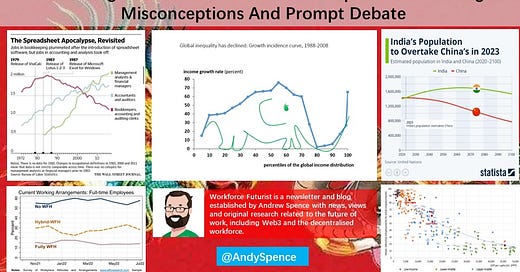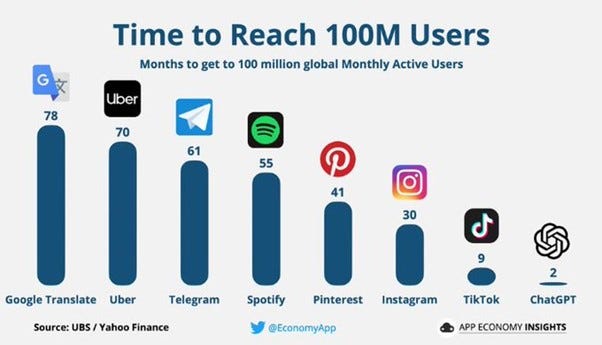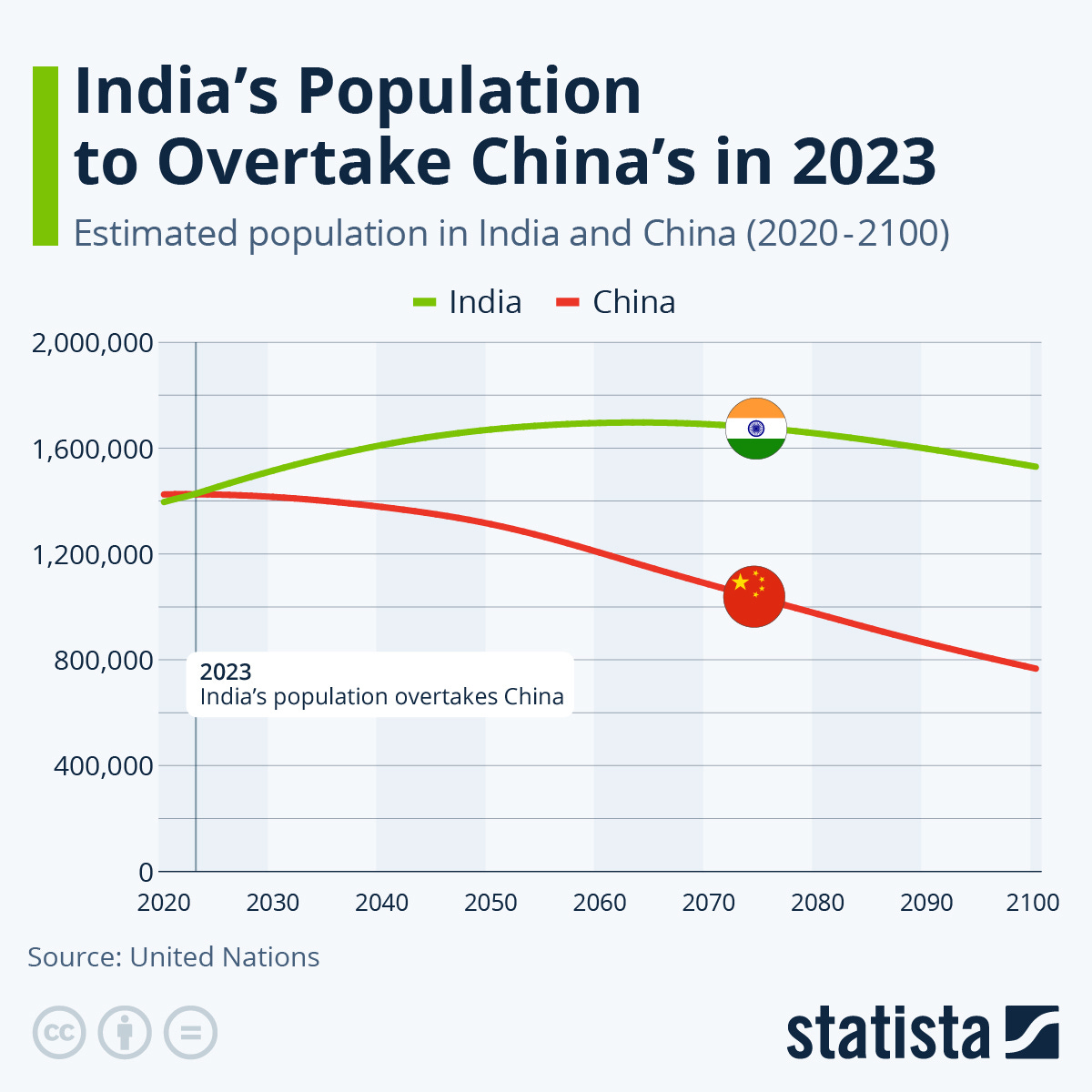Visualising the Future of Work: Five Graphs That Challenge Misconceptions And Prompt Debate
#WF43 - Learning from Lotus 1-2-3, the Elephant in the Room, Will India Surpass China as the Global Workforce Superpower, and, Improving the Informal Economy
Many articles on the future of work have a rather narrow view of the 3.3 billion in the global workforce.
The typical worker is portrayed as a 29-year-old who works from home in a Scandinavian-style kitchen in the suburbs of a US city, employed by a large multinational.
The majority of the global workforce does not have a formal job protected by law, and most do not work from home.
The target audience of the articles are people who are more likely to click on adverts and buy new products and services.
Topics like ‘The Great Resignation’ are plucked tenuously from localised monthly payroll data, paraphrased from a Professor’s Podcast, extrapolated wildly, and converted into industrialised click-bait.
Understanding the global workforce, and some misconceptions, is crucial for businesses and organisations looking to stay competitive and adapt to changing trends.
This article aims to graphically highlight a couple of workforce misconceptions, and pose questions relating to emerging technology, demographics, wages:
What proportion of the global workforce has a ‘formal job’ with legal protection and social security?
What percentage of workers ‘work from home’?
Learning from Lotus 1-2-3 - Will emerging technology like ChatGPT lead to unemployment?
The Elephant in the Room - Why and When did wages stop increasing for Western Workers?
As India becomes the most populous country in the World, Will it surpass China as the next Global Workforce Powerhouse?
1 - What proportion of the global workforce has a ‘formal job’ with legal protection and social security?

Around 2 billion workers worked in informal employment in 2022.
This means their job is not regulated or protected by labor laws and lack social security benefits and legal protections. By this definition, about 60% of the world’s employed population worked in the informal economy.
The graph shows countries with a lower GDP per capita have a higher share of informal employment.
The estimated share of informal workers varies by country:
Sweden 4%, US 10%, UK 12%, France 12%
Brazil 41%, Nigeria 84%, India 85%, Peru 70%
53% of the world’s working-age women are not in the formal labour force.
This area is complex and difficult to measure, but you get the idea.
A couple of questions for those interested in building a preferable future of work:
Is it realistic to have full employment with good quality formal jobs?
What are the opportunities for economic inclusion with a global workforce with access to digital infrastructure?
Further Reading on the Informal Economy
International Labour Organisation Paper “Growth, economic structure and informality” by Juan Chacaltana, Florence Bonnet, Juan Manuel Garcia
2 - What percentage of workers work from home?

55% of US workers do not work from home, according to a recent survey.
69% of UK workers do not work from home, according to ONS data.
The numbers who work from home some of the time is about 45% in the US, and below a third in the UK.
More people work in shops, hospitals, factories, delivery vehicles, and, restaurants, than at home.
3 - Learning from Lotus 1-2-3 - Will emerging technology like ChatGPT lead to unemployment?
“Will Chatbots like ChatGPT will take our jobs?”
This isn’t a new question with regard to emerging technology.
Professor Carlota Perez reckons that there have been five technology surges in the last 250 years. From the Industrial Revolution to Age of Steel and Railways to the Digital Age. Each surge led to innovation, conflict and eventually a societal response.
A consensus amongst labour economists is that new technology destroys some jobs and enables many more. Will this be the same with Generative AI?
One example of new software arriving that caused fear in the workforce, is the introduction of spreadsheet software, for example, Lotus 1-2-3 and Microsoft Excel.
In the 1970s processing data was time-consuming and error-prone.
In the 1980s, with spreadsheet software, you could change one number and instantly recalculate revenues and profits into the future.
There was widespread fear amongst the bookkeepers, that they had crunched their last number.
As the graph shows, the new technology did reduce the demand for bookkeepers. Yet the demand increased for people who could build and run these spreadsheets using the new software.
Talking of spreadsheets, this article below, Excel Never Dies, is a fascinating read about a work tool very dear to the hearts of those in finance, marketing, and HR.
ChatGPT is the most popular app in history because it is so useful.
It could be argued that this is the first time technology can learn to be more productive than humans. So it will be interesting to see if ChatGPT has a similar impact to Microsoft Excel on jobs and work, or will it be different this time.
4 - The Elephant in the Room - Why and When did wages stop increasing for Western Workers?

The so-called ‘Elephant 🐘 curve of global inequality’ ranks the world’s citizens on income. It shows how much each group standing on the same rung of the 1988 income ladder saw their income increase by 2008.
The graph shows the rise of a global middle class, including China, but also that 27% of total growth is captured by the top 1%.
Wages in the West peaked around the 1980s and have then slowly declined.
Since the 1980s we have seen the biggest improvement in poverty in history, with 600m Chinese joining the global workforce.
Read more about the Elephant in the room here.
A question is what might happen to wages in the next 20 years or so?
5 - As India becomes the most populous country in the World, Will it surpass China as the next Global Workforce Powerhouse?
At some point in 2023, India will surpass China as the world’s most populous country - and this might already be the case.
It turns out that China’s population is both declining and ageing.
China has been the global workforce powerhouse, it currently has 875 million workers. This is expected to fall by 35 million over the next 5 years according to official estimates.
“It remains to be seen if India can supply workers to the global economy as successfully as China has. The current boundaries to this happening in India are well documented, from lack of women in the workforce to weak infrastructure and training. “

Misconceptions, Demographics, and, Statistics
"If you torture the data long enough, it will confess to anything." Ronald Coase
It turns out that the average global worker does not work from home, or indeed even have a formal job with legal protections.
Wage growth, global demographics, the informal economy are all complex topics and deserve a full analysis.
Graphs like these are imperfect abstractions and are sometimes based on dubious survey data and incorrect assumptions. They can reveal some insights but also be misleading in themselves, where wrongly implied causality is a casualty.
I hope the article gives some inspiration and resources for those curious to do more research and build a better future.
Four Podcasts and a Conference
Here are some pubic conversations I have been lucky to be involved with, plus discounted conference tickets just for you.
How the ‘Internet of Careers’ is Changing the World of Work. My conversation with Dror Gurevich, the CEO of Velocity Network Foundation. This was the 1st Episode of my new Podcast series, Tech Disruptors. Dror is disrupting the staffing and recruitment industry by gaining cross industry agreement on standard career profiles and building a blockchain mainnet. There’s lots of Web3 hype, but check out this cross-industry approach.
Forecasting the Year Ahead in Recruitment 2023 - Brainfood Live from January 2023 with Hung Lee and other guests.
Blockchain, Web3 and the Future of Work - Brainfood Live from October 22, with Hung Lee and other guests.
Sign up for Upcoming Webinar - “The Opportunities and Ethical Considerations of Generative AI” - April 17th TBC with some very interesting panel guests. Subscribe to Tech Disruptors and make sure you have access to future live and recorded shows.
I am excited to attend the Running Remote Conference 2023 in lovely Lisbon on 25/26th April. The world’s largest conference dedicated to remote team management, I will be learning from experts from Slack, Atlassian, Airbnb and others.
Discounted tickets are available for Workforce Futurists.
If you will be in Lisbon, do come and say Olá!
If you enjoyed reading this Workforce Futurist article, and want to show your appreciation, then Press LIKEY ❤️, share the article with your network, and make sure you subscribe!







